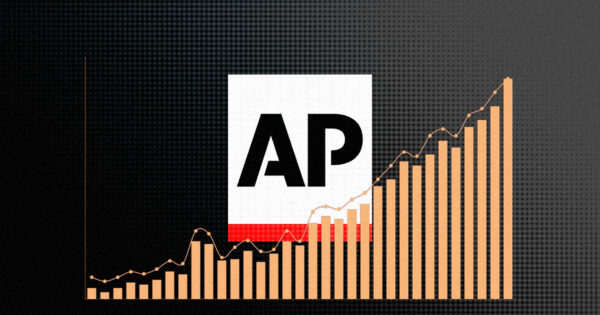The AP Sees Ad Revenue, Traffic Upticks Following Diversification Push

Join the experts at Mediaweek, October 29-30 in New York City. Stay ahead of the shifts impacting the media landscape and gain fresh strategies to drive platform growth. Save 20% on passes.
Last June, The Associated Press began a concerted effort to expand its advertising business, which generated just 5% of its total revenue compared with the roughly 80% it took in from its lucrative licensing operation.
The publisher redesigned its website, inserting more ad units, multimedia and recirculation tools, and hired a direct sales team for the first time in its 178-year-old history. To diversify its revenue further, it launched a donation platform in November and an affiliate marketing operation in March.
Following the overhaul, the publisher has seen upticks in its traffic, digital ad revenue—from both direct and programmatic sources—and video consumption, according to chief revenue officer Kristin Heitmann.
“It’s been a good year, and we’re pacing ahead of budget,” Heitmann said. “We have programmatic, an emerging growth line with direct and now affiliate and donations going forward.”
In its push to diversify its revenue base, the AP mirrors other publishers looking to insulate their businesses against decline in any one sector. In March, for instance, newspaper giants Gannett and McClatchy both ended their licensing deals with the AP—a reminder that even its licensing operation is not invulnerable to market pressures.
However, the AP differs dramatically from its competitive set in one critical aspect: While other publishers are looking to expand away from advertising, the AP is moving into it. The publisher hopes to at least double the percentage of its revenue that it derives from advertising, according to Heitmann.
Such an initiative will be a yearslong process, according to eMarketer analyst Max Willens, as the company is effectively starting from scratch in many regards. The AP only began using a data-management platform last year, for instance, and its pools of first-party data and registered readership pale in comparison to those of its peers.
“The AP will have a good shot at this if it stays focused on it and is prepared to be patient,” Willens said. “But it has so much that it has to do to get to competitive parity, and before it gets there, it’ll have to rely on open-web programmatic.”
Growing advertising revenues
Since its website redesign last June, the AP has seen its monthly page views and unique visitors rise 17% and 16%, respectively, according to vice president of consumer revenue Drew Stoneman.
A frenzied news cycle featuring geopolitical unrest, historic elections across the globe and in the U.S. and the 2024 Summer Olympic Games in Paris have produced a natural upswing in readership.
Improvements in the SEO (search engine optimization) of the website, as well as an increase in multimedia and recirculation tools, have also helped the AP perform better in search and convert single-session readers into multi-session readers, according to Stoneman.
On the video front, views are up 89%, view time is up 300% and the publisher added 750,000 subscribers to its YouTube channel, putting it north of 3 million total. Combined with the traffic increases, the AP has seen a 20% increase in digital ad revenue.
The publisher has pushed to increase the percentage of its ad revenue that comes from direct sales, and it has seen success on that front, albeit from a low base. Revenue from direct sales rose 20%, and deal size is up 30%, according to Stoneman.
Less tangibly, the AP has broken into the consideration set for direct budgets, according to Heitmann. Last year, it had little visibility at the agency or client level.
But the bulk of its advertising revenue—around 70%—still comes from open-programmatic sources tied to traffic. The boost in traffic has produced a concomitant boost in revenue, but the publisher still hopes to gradually shift its business to more consistent lines of revenue, like direct buys, donations and affiliate revenue, according to Stoneman.
Shifting revenue mix
The AP’s push into advertising is only one part of its broader push toward revenue diversity.
Its new donation platform has solicited donations from over 7,000 people since November—an encouraging start, but one that leaves ample room for improvement. Likewise, the affiliate business it launched in partnership with Taboola is still in its infancy.
The donation infrastructure could evolve into a more active call to action for reader support, according to Stoneman. The AP will never paywall its full reporting, but the publisher is considering strategies for presenting its most avid readers with opportunities to access gated content. At the least, a more prevalent registration wall is likely. It also plans to soon unveil a games and crossword offering.
These tactics, combined with its burgeoning newsletter library, all encourage readers to make a habit out of consuming the AP. This, in turn, provides the publisher with better data on its audience, which it can use to craft more sophisticated advertising pitches.
“It’s been a satisfying year,” Stoneman said. “It’s been challenging because so much work has been needed to go from a business-to-business to a direct-to-consumer workflow, but there has been reciprocity in that effort. Improving one has improved the other.”
https://www.adweek.com/media/ap-ad-revenue-traffic-upticks/